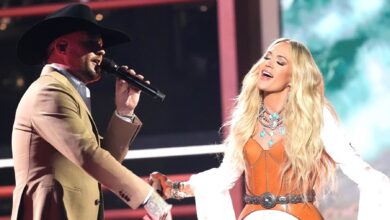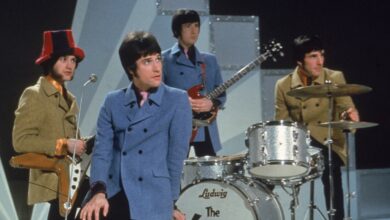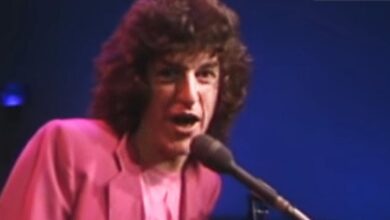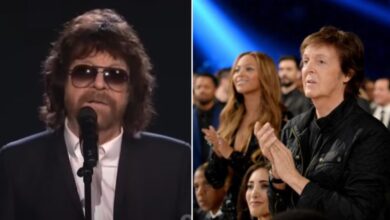Coat of Many Colors’ by Dolly Parton is still a timeless hit in 2025
In 1969, while traveling on a tour bus with Porter Wagoner, Dolly Parton found herself inspired to write a song that would later become one of her most cherished works: “Coat of Many Colors.” Lacking paper at the moment, she penned the lyrics on the back of a dry cleaning receipt. This impromptu creation would encapsulate a poignant story from her childhood, reflecting themes of poverty, pride, and maternal love.
The song narrates a true story from Parton’s youth in the hills of Tennessee. Her mother, Avie Lee, crafted a coat for young Dolly from a box of donated rags. As she sewed, she recounted the biblical tale of Joseph and his coat of many colors, instilling a sense of pride and uniqueness in the garment. This narrative not only highlights the family’s financial struggles but also underscores the richness of love and storytelling in their household.
Eager to showcase her new coat, Dolly wore it to school, only to face ridicule from her classmates who couldn’t see beyond the patched fabric. Despite their taunts, she held her head high, believing in the value her mother had woven into each stitch. This experience taught her an invaluable lesson: true wealth isn’t measured by material possessions but by the love and experiences that shape one’s life.
In April 1971, Parton recorded “Coat of Many Colors” at RCA Studio B in Nashville. Released as the title track of her album in September that year, the song resonated deeply with audiences, reaching number four on the U.S. country singles charts. Its success solidified Parton’s reputation as a storyteller who could convey profound messages through simple, heartfelt lyrics.
The song’s impact extended beyond the charts. In 2011, “Coat of Many Colors” was added to the Library of Congress’s National Recording Registry, recognized for its cultural, historical, and aesthetic significance. This honor highlighted the song’s enduring relevance and its role in American musical heritage.
Over the years, numerous artists have covered “Coat of Many Colors,” each bringing their unique interpretation to the timeless ballad. Notably, Shania Twain’s rendition, accompanied by Alison Krauss and Union Station, introduced the song to a new generation, showcasing its universal appeal and the versatility of Parton’s songwriting.
The song’s narrative was further immortalized in 2015 when NBC aired a television movie titled “Dolly Parton’s Coat of Many Colors.” The film delved into Parton’s upbringing, bringing to life the stories and values that shaped her music. Its success led to a sequel, “Dolly Parton’s Christmas of Many Colors: Circle of Love,” which continued to explore her family’s legacy.
In interviews, Parton has often expressed that “Coat of Many Colors” holds a special place in her heart. She considers it one of her most personal compositions, encapsulating the essence of her childhood and the lessons imparted by her mother. The song serves as a reminder of the intangible riches found in love, family, and self-worth.
The original dry cleaning receipt on which Parton wrote the lyrics has become a cherished artifact. Porter Wagoner, recognizing its significance, had it framed and later donated it to Parton’s Chasing Rainbows Museum at Dollywood, where it remains on display, symbolizing the humble beginnings of a legendary song.
“Coat of Many Colors” continues to be a staple in Parton’s performances, often eliciting emotional responses from audiences. Its message of finding wealth in love and self-acceptance resonates across generations, making it as relevant today as it was upon its release. The song’s enduring popularity is a testament to Parton’s ability to touch hearts through her storytelling prowess.
In 2021, Rolling Stone magazine ranked “Coat of Many Colors” at number 263 on its list of the “Top 500 Greatest Songs of All Time.” This accolade reflects the song’s lasting influence and its place among the most celebrated compositions in music history.
Beyond its musical achievements, “Coat of Many Colors” has inspired various adaptations, including a children’s picture book that brings the song’s story to a younger audience. This extension into literature underscores the song’s multifaceted impact and its ability to convey meaningful lessons across different mediums.
Parton’s reflection on the song reveals its deep personal significance. She has stated that it teaches about bullying, love, acceptance, and the importance of good parenting. These themes, woven into the fabric of the song, continue to inspire and educate listeners, highlighting the power of music as a tool for social commentary and personal reflection.
The legacy of “Coat of Many Colors” is further cemented by its inclusion in educational curricula, where it serves as a case study for discussions on socio-economic disparities, resilience, and the transformative power of love. Educators utilize the song to foster empathy and understanding among students, demonstrating its relevance beyond the realm of entertainment.
As of 2025, “Coat of Many Colors” remains a defining piece of Dolly Parton’s illustrious career. Its timeless message continues to resonate, reminding listeners of the profound truth that true wealth is not measured by material possessions but by the love and values instilled in us. The song stands as a testament to Parton’s enduring



